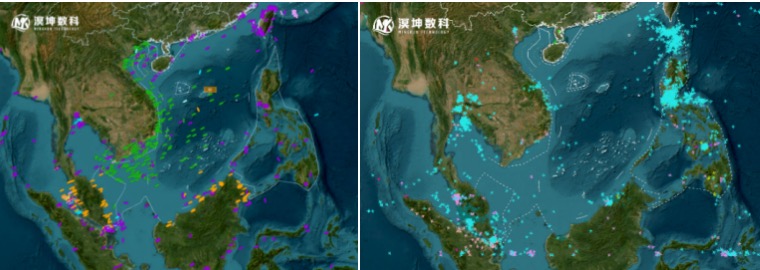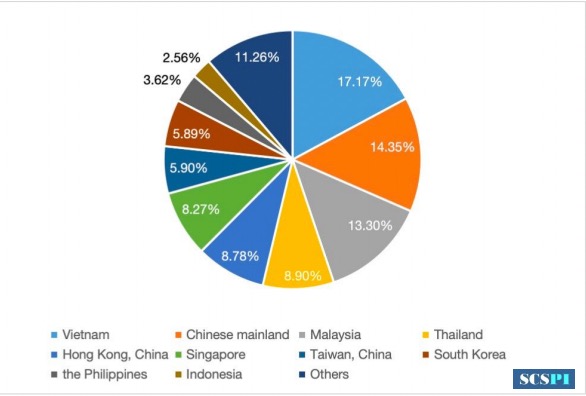Perface
The South China Sea, located on the edge of the western Pacific Ocean, covers an area of approximately 3.5 million square kilometers, linking the Pacific and Indian Oceans, it serves as a crucial maritime thoroughfare. Geographically, the South China Sea is divided into 5 maritime routes: the northern route includes the China inland sea—the Qiongzhou Strait; the northeastern route connects to the East China Sea through the Taiwan Strait, then extends to the Pacific Ocean through the Bashi Channel, Balintang Channel, and Babuyan Channel; the eastern route leads directly to the Sulu Sea through the Mindoro Strait and Balabac Strait; the southern route connects to the Indian Ocean through the Sunda Strait; and the western route passes through the Singapore Strait and the Strait of Malacca, reaching the Andaman Sea.
Freedom of the Seas is a longstanding principle in international law and a significant concept in modern international law development, one that China adheres to. Over the ages, coastal states located around the South China Sea have utilized the sea routes to trade globally, fostering developments in shipbuilding, navigation, and their related fields. The 1998 Law on the Exclusive Economic Zone and the Continental Shelf of the People's Republic of China explicitly states that “All countries are entitled, provided they comply with international law and the laws and regulations of the People's Republic of China, to freedom of navigation and overflight in the exclusive economic zone of the People's Republic of China.” Apart from provisions concerning marine scientific research and surveys, China has not imposed explicit restrictions on foreign military vessels and aircraft activities in waters under its jurisdiction outside its territorial seas and airspace.
In terms of economic trade, South China Sea’s openness and freedom are evident: Merchant vessels pass through the South China Sea nearly 500,000 times annually, with around 40% of global trade goods transiting the South China Sea and its surrounding straits and millions of civilian aircraft fly over the South China Sea, making it one of the busiest maritime and aerial passages worldwide.
On the security front, military forces from both regional and external countries conduct over 20,000 ship-days and more than 30,000 aircraft sorties in the South China Sea annually, along with hundreds of large-scale drills and various exercises. Compared to civilian vessel and aircraft activities, the scale of military activities is mainly unknown over the long term. There exists an international misconception that some coastal states of the South China Sea, especially claimant states, unreasonably restrict military activities in the area. In reality, while coastal states generally do not welcome foreign military forces’ activities in their claimed waters, they mainly conduct tracking and surveillance and only resort to measures of a forceful nature in specific areas and circumstances. Overall, countries from both in and outside the region enjoy the freedom to engage in military activities in the South China Sea, as normal under international law.
In recent years, driven by US attempts to “contain China” using maritime disputes, tensions in the South China Sea have escalated. The intensification of certain disputes has attracted significant international attention. However, current frictions mainly exist among some disputing parties, and any relevant disputes have not affected other countries’ navigation and overflight freedoms in the South China Sea. China-US militaries’ interactions and encounters in the area are generally professional and safe. The impact of great power competition on navigation and overflight freedoms in the South China Sea remains manageable. The primary threats to maritime navigation are non-traditional security factors such as geographical obstacles, natural disasters, unbalanced development, piracy, and armed robbery against ships, which have long been overlooked and lack due attention.



Content
I. Rules and Regulations on Navigation in the South China Sea under International Law
II. Navigation and Overflight of Civilian Ships and Aircraft
III. Activities of Warships and Military Aircraft
IV. Representative Operations Influencing Maritime Freedoms
V. Impact of the South China Sea Disputes on Navigation and Overflight 26
Conclusion
Please download PDF for full report.

